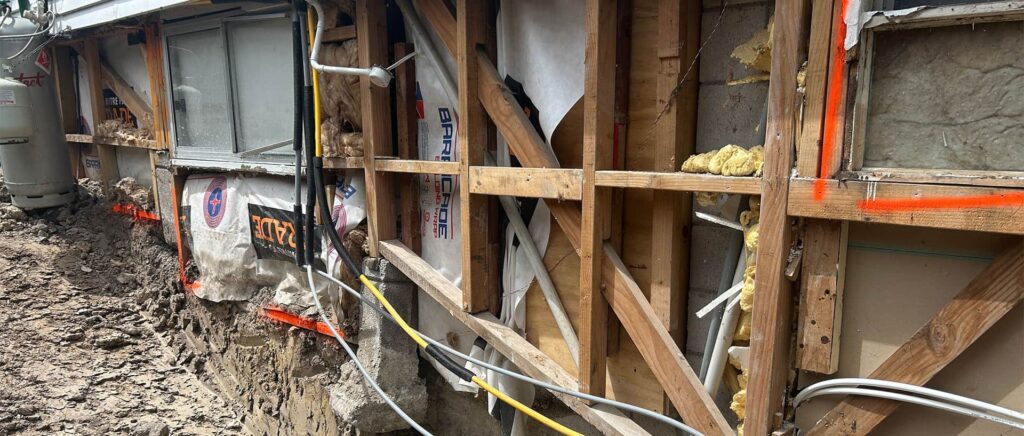What lies beneath
The hidden home DIY disasters of previous owners
We think we know our homes, but lurking behind walls and beneath floors can be hidden problems from shoddy DIY work done by previous owners, which not only disrupt your renovation plans but can compromise the health and safety of your family.
"Consulting a builder before you have plans drawn up is crucial," says Marty Bamford, Managing Director. "Too often, hidden issues only come to light once work begins, which can lead to costly delays because the issues that were uncovered may need additional planning consent.”
Hidden risks in your home
A recent Platinum Pacific Group project uncovered major issues during what began as a routine roof repair. The owner called attention to flooding in the basement and asked PPG to look into it.
The team found DIY workmanship from a past alteration that wasn’t compliant with building codes—even those from the 1990s.
"There were no defined studs or plates, and the structural integrity was so poor you could shake a wall with your hands," says Marty.
Non-compliant work like this often leads to water ingress, mould, and loss of structural integrity. These issues can reduce the value of your home, make it colder and damp, and create health risks for occupants.
This problem isn’t rare. PPG finds that more than half the homes the team works on have similar hidden defects, often from poor workmanship, and it’s the current homeowners who end up shouldering the problem.

Why do these problems persist?
A lack of due diligence is often the cause. Many homeowners skip essential steps like pre-purchase inspections, LIM reports, or reviewing council files.
"We’re surprised some people still don’t get a proper builder’s report before buying a home," says Marty. “At around $500 to $600, these inspections can identify hidden risks early and prevent costly surprises later.”
After purchase, problems may arise when homeowners begin renovations without accounting for what may be hidden behind walls and floors. Issues like non-compliant planning often surface mid-project, requiring planning revisions and council approval that delay work and add extra costs.
The solution?
Consult a professional builder or building surveyor before you draft plans.
"Addressing non-compliant elements from the start avoids delays and ensures renovations meet standards,” says Marty. “The team here at PPG are excellent at uncovering and solving problems cost-effectively to make your home healthy and compliant.”
